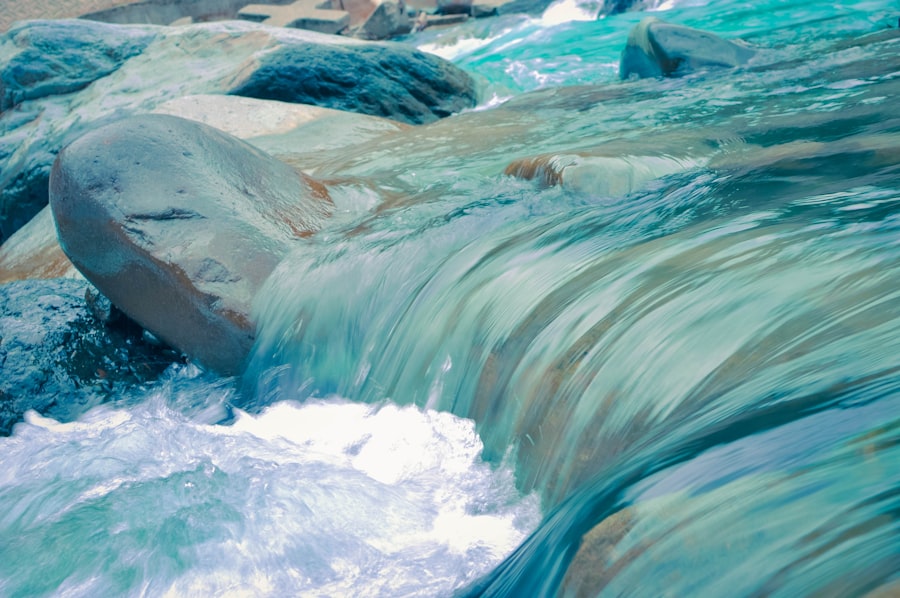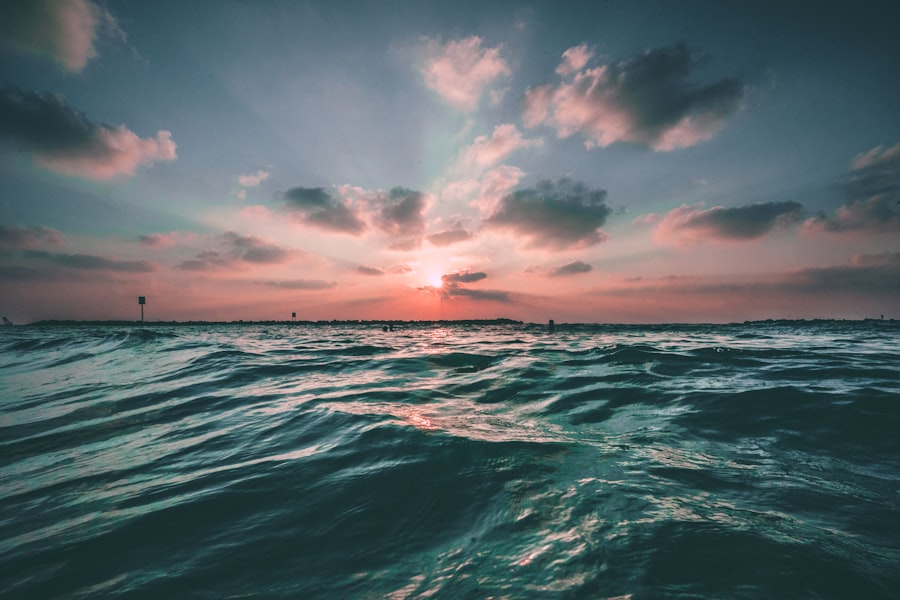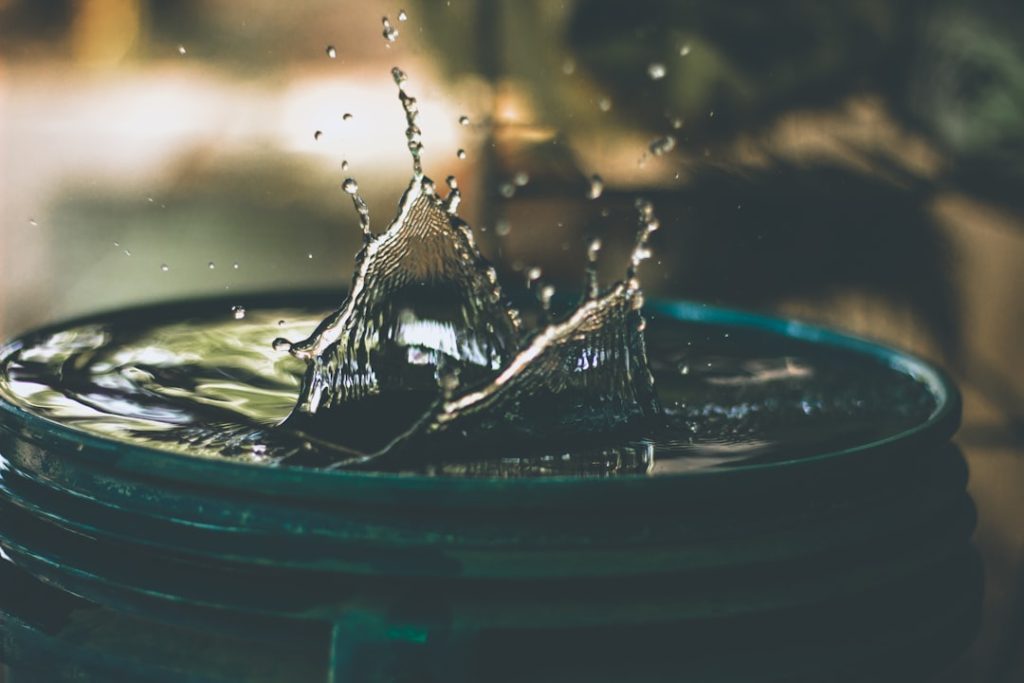Green water in ponds and water features is a common issue caused by algae overgrowth. This occurs when water contains high levels of nutrients like nitrogen and phosphorus, which algae thrive on. Excessive sunlight, warm temperatures, poor water circulation, and low oxygen levels can exacerbate the problem, creating ideal conditions for algae proliferation.
To address green water, it’s crucial to understand and tackle the root causes. Effective strategies include implementing proper watering systems, regular cleaning and maintenance, providing adequate shade, adding natural water purifiers, monitoring water quality, and seeking professional advice when needed. By taking these proactive measures, pond owners can prevent and control algae growth, maintaining clearer and healthier water in their ponds and water features.
Table of Contents
- 1 Implementing Proper Watering Systems
- 2 Regular Cleaning and Maintenance
- 3 Providing Adequate Shade and Shelter
- 4 Adding Natural Water Purifiers
- 5 Monitoring Water Quality
- 6 Seeking Professional Advice
- 7 FAQs
- 7.1 What causes chicken water to turn green?
- 7.2 Why is green water harmful to chickens?
- 7.3 How can I prevent my chickens’ water from turning green?
- 7.4 Are there any natural remedies to prevent green water in chicken waterers?
- 7.5 Can I use chemical treatments to prevent green water in chicken waterers?
Key Takeaways
- Green water is caused by an overgrowth of algae due to excess nutrients and sunlight in the water.
- Proper watering systems such as drip irrigation can help prevent the buildup of excess nutrients in the water.
- Regular cleaning and maintenance of water features can help prevent the growth of algae and keep the water clear.
- Providing adequate shade and shelter can help reduce the amount of sunlight reaching the water, preventing algae growth.
- Adding natural water purifiers such as aquatic plants and beneficial bacteria can help maintain water quality and clarity.
Implementing Proper Watering Systems
Aeration and Circulation
One of the most effective ways to prevent green water in ponds is to implement proper watering systems. This includes using pumps and filters to circulate and aerate the water, which helps to maintain oxygen levels and prevent stagnation. Aeration not only helps to keep the water clear and free of algae, but it also creates a healthier environment for fish and other aquatic life.
Controlling Algae Growth
Additionally, installing a UV clarifier can help to control algae growth by using ultraviolet light to kill algae cells and prevent them from reproducing. Another important aspect of proper watering systems is to ensure that the water is not over-fertilized, as excessive nutrients can fuel the growth of algae. Using natural or organic fertilizers and being mindful of the amount and frequency of fertilization can help to maintain a healthy balance in the pond ecosystem.
Preventing Excess Nutrients
It is also important to avoid overfeeding fish, as uneaten food can decompose and release nutrients into the water, contributing to algae growth. By implementing these proper watering systems, pond owners can effectively prevent and control green water in their ponds.
Regular Cleaning and Maintenance

Regular cleaning and maintenance are essential for preventing green water in ponds. This includes removing debris such as leaves, twigs, and other organic matter that can decompose and release nutrients into the water. It is also important to regularly clean filters and pumps to ensure that they are functioning properly and maintaining good water circulation.
Additionally, performing partial water changes can help to dilute excess nutrients and reduce the risk of algae overgrowth. In addition to physical cleaning, it is important to monitor water quality regularly by testing for pH, ammonia, nitrites, and nitrates. Maintaining proper water parameters is crucial for creating a healthy environment that is less conducive to algae growth.
If water quality issues are identified, corrective measures such as adding beneficial bacteria or using chemical treatments may be necessary to restore balance in the pond ecosystem. By staying on top of regular cleaning and maintenance tasks, pond owners can effectively prevent green water and maintain a clear and healthy pond environment.
Providing Adequate Shade and Shelter
Providing adequate shade and shelter is another important strategy for preventing green water in ponds. Excessive sunlight can promote algae growth, so it is important to create shaded areas in the pond using aquatic plants, floating vegetation, or strategically placed structures such as pergolas or umbrellas. These shaded areas not only help to reduce sunlight exposure, but they also provide refuge for fish and other aquatic life, creating a more balanced and natural ecosystem.
In addition to shade, providing shelter in the form of rocks, caves, or aquatic plants can help to create hiding spots for fish and other pond inhabitants. This not only adds visual interest to the pond but also helps to reduce stress on fish by providing them with places to retreat from predators or harsh environmental conditions. By providing adequate shade and shelter, pond owners can create a more balanced and harmonious pond environment that is less prone to algae overgrowth.
Adding Natural Water Purifiers
Adding natural water purifiers such as aquatic plants can help to prevent green water in ponds by competing with algae for nutrients and creating a more balanced ecosystem. Plants such as water lilies, lotus, hornwort, and water lettuce not only provide shade and shelter but also absorb excess nutrients from the water, effectively reducing the availability of nutrients for algae. Additionally, these plants release oxygen during photosynthesis, which helps to maintain good water quality and create a healthier environment for fish and other aquatic life.
In addition to aquatic plants, adding beneficial bacteria can also help to control algae growth by breaking down organic matter and reducing nutrient levels in the water. Beneficial bacteria work to establish a natural balance in the pond ecosystem, helping to prevent green water and maintain clear and healthy water conditions. By adding natural water purifiers such as aquatic plants and beneficial bacteria, pond owners can effectively prevent and control green water in their ponds.
Monitoring Water Quality

Identifying Imbalances
Regular water quality testing enables pond owners to detect any imbalances in the pond ecosystem that may lead to green water. By staying on top of water quality monitoring, pond owners can take proactive measures to address any issues before they escalate into larger problems.
Observing the Pond Ecosystem
In addition to regular testing, it is essential to observe the overall health of the pond ecosystem, including the behavior of fish and other aquatic life. Changes in fish behavior or signs of stress may indicate underlying issues with water quality or environmental conditions that need to be addressed.
Maintaining a Healthy Pond Environment
By monitoring water quality and observing the overall health of the pond ecosystem, pond owners can take proactive measures to prevent green water and maintain a clear and healthy pond environment. This proactive approach helps ensure a thriving ecosystem where fish and other aquatic life can flourish.
Seeking Professional Advice
In some cases, preventing and controlling green water in ponds may require professional advice from experts in pond management and water quality. Professional pond consultants or aquatic specialists can provide valuable insights and recommendations for addressing specific issues related to green water and maintaining a healthy pond environment. They can offer guidance on proper watering systems, effective cleaning and maintenance practices, suitable aquatic plants for natural water purification, and other strategies for preventing green water.
Additionally, professional advice may be necessary for identifying underlying issues such as nutrient imbalances or poor water circulation that contribute to green water in ponds. By seeking professional advice when necessary, pond owners can gain a better understanding of their specific pond ecosystem and receive tailored recommendations for preventing green water and maintaining a clear and healthy pond environment. In conclusion, preventing green water in ponds requires a proactive approach that addresses the underlying causes of algae overgrowth.
By implementing proper watering systems, regular cleaning and maintenance practices, providing adequate shade and shelter, adding natural water purifiers, monitoring water quality, and seeking professional advice when necessary, pond owners can effectively prevent and control green water in their ponds. Creating a balanced and healthy pond environment not only enhances the beauty of the landscape but also provides a thriving habitat for fish and other aquatic life. With proper care and attention, ponds can remain clear and vibrant, free from the unsightly green water that plagues many pond owners.
If you’re looking for more tips on keeping your chickens healthy and happy, you might want to check out this article on renting a chicken coop. Providing a clean and safe environment for your chickens is essential for their well-being, and having a proper coop can help prevent issues like green water in their drinking supply.
FAQs
What causes chicken water to turn green?
Green water in chicken waterers is typically caused by algae growth. Algae thrives in warm, sunny conditions and can quickly take over standing water, turning it green.
Why is green water harmful to chickens?
Green water can be harmful to chickens as it may contain harmful bacteria and toxins produced by the algae. Additionally, chickens may be less likely to drink water that is discolored or has a strange odor, leading to dehydration and health issues.
How can I prevent my chickens’ water from turning green?
To prevent green water, regularly clean and scrub the waterers to remove any algae buildup. Additionally, consider using a waterer with a cover or one that is designed to minimize sunlight exposure to the water.
Are there any natural remedies to prevent green water in chicken waterers?
Some natural remedies to prevent green water include adding a small amount of apple cider vinegar to the water, using food-grade diatomaceous earth, or placing a few drops of essential oils such as oregano or thyme in the water.
Can I use chemical treatments to prevent green water in chicken waterers?
While there are chemical treatments available to prevent algae growth in waterers, it’s important to use caution and follow the manufacturer’s instructions. Some chemicals may be harmful to chickens if ingested, so natural remedies are often preferred.
Meet Walter, the feathered-friend fanatic of Florida! Nestled in the sunshine state, Walter struts through life with his feathered companions, clucking his way to happiness. With a coop that’s fancier than a five-star hotel, he’s the Don Juan of the chicken world. When he’s not teaching his hens to do the cha-cha, you’ll find him in a heated debate with his prized rooster, Sir Clucks-a-Lot. Walter’s poultry passion is no yolk; he’s the sunny-side-up guy you never knew you needed in your flock of friends!







